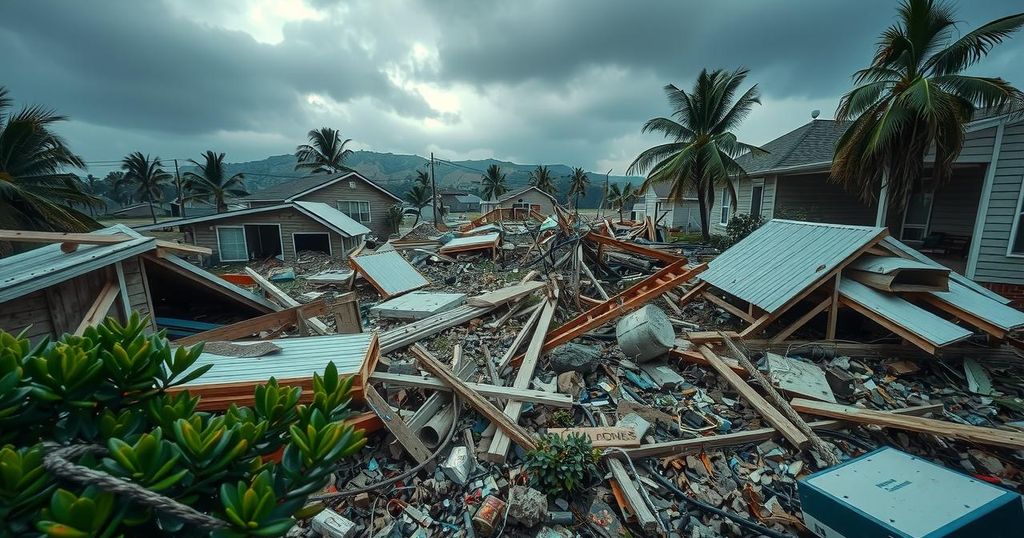Weather
World news
AFRICA, ASHEVILLE, ATLANTIC, BE, BERMUDA, BRIAN MCNOLDY, CARRIACOU, CUBA, DOMINICAN REPUBLIC, EUROPE/ASIA, FLORIDA, GEORGIA, GRENADA, GULF COAST, GULF OF MEXICO, HELENE, HURRICANE, HURRICANE BERYL, HURRICANE SEASON, JAMAICA, KATE, KATRINA, MAINLAND, NATIONAL HURRICANE CENTER, NATURAL DISASTER, NATURAL DISASTERS, NORTH AMERICA, NORTH CAROLINA, OF MIAMI, ORLANDO, RAFAEL, SOUTH AFRICA, SOUTH CAROLINA, TAMPA, TENNESSEE, U. S, U. S. GULF COAST, UNITED STATES, UNIVERSITY, UNIVERSITY OF MIAMI, VIRGINIA
Sofia Rodriguez
0 Comments
2024 Atlantic Hurricane Season Concludes with Unprecedented Activity and Damage
The 2024 Atlantic hurricane season ended with 11 hurricanes, exceeding the average of seven. The season was marked by intense storms, including the first Category 4 hurricane in June and the deadliest storm since Katrina. Significant damages were reported across the southeastern U.S., with estimates reaching $48.8 billion in North Carolina alone. Experts attribute the season’s extremes to unusually warm ocean temperatures influenced by climate change.
The 2024 Atlantic hurricane season concluded on Saturday, reporting an unprecedented 11 hurricanes, exceeding the average count of seven. Meteorologists characterized the season as remarkably busy, with a significant correlation to elevated ocean temperatures. Notably, eight hurricanes made landfall across various locations, including the United States, Bermuda, Cuba, the Dominican Republic, and Grenada.
Among the standout events, Hurricane Beryl marked the first Category 4 hurricane to form in June, impacting Carriacou in Grenada and resulting in crop destruction and fatalities. Furthermore, it evolved into the first Category 5 hurricane recorded as early as July, an anomaly in typical hurricane patterns.
Hurricane Helene emerged as the deadliest storm since Hurricane Katrina in 2005, inflicting catastrophic damage across southeastern states, with over 200 lives lost and estimated damages exceeding $48.8 billion in North Carolina alone.
Subsequently, Hurricane Milton intensified to 180 mph, making it one of the strongest hurricanes in Gulf history, while Hurricane Rafael later threatened Cuba, compounding recovery struggles from prior storms. This season highlighted the growing influence of climate change on hurricane frequency and intensity, prompting experts to raise concerns about the future trajectory of such extreme weather events.
The Atlantic hurricane season, spanning from June 1 to November 30, is a critical period during which tropical storms and hurricanes develop in the Atlantic Ocean. Hurricane seasons are characterized by trends and averages in the number of storms formed and their intensity. The 2024 season was particularly impactful due to a combination of environmental factors, including unusually warm ocean temperatures that appear to correlate with increased hurricane activity. This year’s season exemplified significant shifts in hurricane behavior that meteorologists are beginning to attribute to climate change effects. Scientists point out that the warming of the oceans contributes to stronger storms forming at atypical times, posing challenges for forecasting and preparedness.
The 2024 Atlantic hurricane season concluded with notable extremes that reflect the changing dynamics of storm formation attributed to climate change. With 11 hurricanes documented, including devastating storms like Helene and Milton, the season underscored both the immediate human toll—over 200 lives lost—and enormous economic impacts across multiple states. As meteorological observations increasingly link these phenomena to climate variations, the implications for future hurricane seasons remain a subject of intense scrutiny and concern among scientists and policymakers alike. Moving forward, it is crucial for communities to strengthen resilience strategies against these rising natural disasters, while also addressing the root causes of climate change to mitigate future risks.
Original Source: www.newsday.com




Post Comment